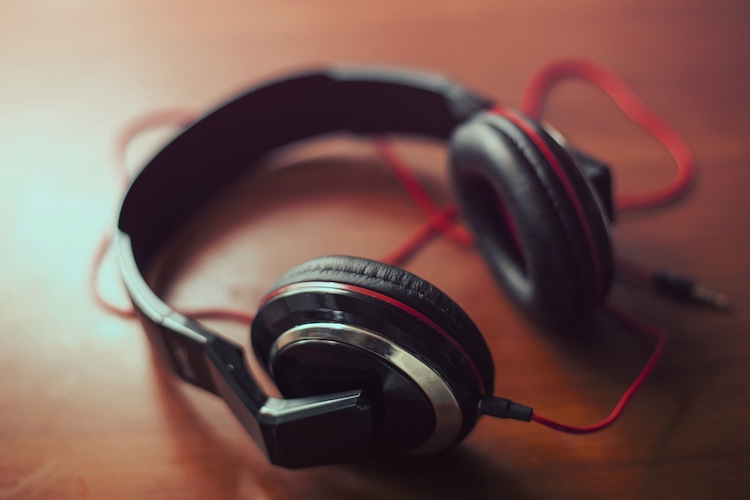This is a question I’m asked often, and I even discussed some of this with Barnabas Piper and Todd Adkins recently on an episode of their podcast 5 Leadership Questions.
You’ll find varying equipment lists around the web, but you ultimately need to find what works for your budget and your needs. So here is what I use for the podcasts I produce.
Microphone
It all starts here. You need good quality audio to begin with if you’re going to expect to have a good quality product at the end. Microphones matter. So if you’re going to spend money on anything, spend it on the microphones. I use a Heil PR-40 for our shows. It’s a unidirectional mic, so you get very little background noise. The small catch is that you have to talk straight into the mic. It takes some getting used to at first, but if you’re running solo or with just one other person, it’s pretty simple. If you’re on a budget, a Shure SM-58 will also do the trick.
Microphone Stand and Cables
I don’t really have a recommendation here because depending on the setup you’re working with, there can be a great deal of variance on what I would recommend. Just know that you need a good cable (of appropriate length) and a good stand (shock mounts are always preferred and typically can be purchased specifically for your microphone) for each microphone.
Mixing Board
This piece is setup-specific. You can bypass this purchase if you’re recording into a portable recorder or your computer (which I don’t recommend). I use a mixing board with an internal hard drive. This piece of equipment allows me to record separate tracks for editing later. I can also have more mics active than if I was only using a portable recorder. I’m currently using a Zoom R16 Multitrack SD Recorder for Rainer on Leadership and love it. It has an SD card I can easily record to and remove to move files to my hard drive on my computer.
Portable Recorder
These are great for traveling or basic recording, especially if you do an interview-style podcast. You can record two separate tracks and set up quickly. I use a Tascam DR-40 for my SBC This Week podcast with Amy Whitfield. I usually record at home, so all I have to do is run a cord from my computer to the recorder and plug in my mic. Setup takes less than five minutes, and I’m ready to go. Even if you don’t use this all the time, get one of these. They come in really handy for a number of projects. For example, I recorded sessions of the SBC Annual Meeting on mine last year off my iPhone by streaming the video of the meeting and running my phone’s audio into the recorder. It’s quite a versatile piece of equipment.
Headphones
We all have headphones lying around the house or office. But for podcasting I would recommend ones that do some kind of noise cancelling or at least are over-the-ear. You need to be able to pick up faint noises when editing. Your Apple earbuds aren’t going to be of much help in that regard. I wouldn’t go any lower quality than Sennheiser’s HD 280 Pro headphones. Also, if you’re going to have more than one person at a time using headphones, get a second pair and a headphone amp and a short patch cable.
Editing Equipment
As if the hardware wasn’t diverse enough, when we get to software for editing, there are so many choices. My best advice is to use something you can understand and become proficient in. I use a free app called Audacity on my Mac. In the app, I use an effect plugin called Compress Dynamics to clean up the audio before I start editing. But that’s about all I do to the audio files other than taking out all my mistakes—Amy and Dr. Rainer never make mistakes…just me.
File Storage
Do not, and I repeat, DO NOT store your podcast files locally. Use either LibSyn or Amazon S3 for that. Let someone else worry about bandwidth and backups. Both services are affordable and meet industry standards.
Broadcast Plugin
You have two main options:
- Blubrry Powerpress for WordPress – If you’re using WordPress, I’d lean toward this and using the category podcasting feature. Also, sign up for the stats service. It’s around $50 per year and is a great bargain for what you get in return. Setup can be clunky if you’re unfamiliar with the plugin, but there are several tutorials online to help.
- Libsyn – This is more of an all-in-one stop for hosting and distribution. If you’re not tech saavy or not on WordPress, this is your huckleberry.
Do you use any of these pieces of equipment or services for your podcast?


When it comes to microphones, have you ever used a Blue Yeti. I have one and really like it.
Terry
I have not because I’ve been going into mixing boards. If you’re going straight into the computer, I’ve heard nothing but positive things about them. When I need to go into a computer, I have a Blue Icicle that I plug into my existing mic. Just the route I’ve chosen.
What is the exact setup for an interview podcast using the Tascam DR-40? How do you get Amy’s voice in the recording when you do SBC This Week?